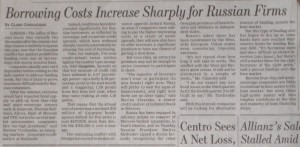I was in NYC recently and saw a big airplane over to the side of the tarmac, surrounded by police cars with flashing lights. I had a long time to kill since we were in the never ending queue to get up to the runway at LaGuardia. When I got up closer I could see that it was Obama’s plane – he was apparently in NYC meeting the faithful. Here is an article about his plane (and McCain’s).
All I can say is that he wasn’t exactly saving greenhouse gases in his trips. It was a big full-size jet – a Boeing 757. A big bus pulled up in front of the jetway, although I didn’t see anyone getting up (view was blocked). The plane didn’t go to the terminal, it was out far on the corner of the tarmac by the runway, with the big stairway moving up to the front (just like in those old movies where the Beatles are getting off the plane). The next thing I know, we were waiting in queue and his plane just pulled to the front of the line, directly in front of my flight. They just moved to the front of the whole line.
I didn’t have my blog camera with me or I’d have taken a photo. But I can tell you that Obama left around 6pm Eastern time.
He travels in style, that’s for sure. He can run a campaign and knows how to get out of LaGuardia faster than any ordinary civilian, by just going directly to the plane and avoiding check in and security and then just cutting his big jet to the front.
